How old do baby start teething. Baby Teething Guide: Timeline, Symptoms, and Remedies for New Parents
When do babies start teething. What are the common signs of teething. How long does teething last. What are effective remedies for teething discomfort. How to distinguish between teething symptoms and other health issues.
Understanding the Teething Process: What Every Parent Should Know
Teething is a significant milestone in a baby’s development, marking the emergence of their first set of teeth. This process can be both exciting and challenging for parents and infants alike. But what exactly is teething, and when does it typically begin?
Teething occurs when a baby’s teeth start to emerge through the gums. This process usually begins between 4 and 10 months of age, though the exact timing can vary significantly from one child to another. It’s important for parents to remember that each baby develops at their own pace, so there’s no need for concern if your child’s teeth appear earlier or later than average.
The Teething Timeline: What to Expect
The teething process continues until a child is about 3 years old, by which time all 20 primary (baby) teeth should have emerged. Here’s a general timeline of when you can expect different teeth to appear:

- Bottom central incisors: 6-10 months
- Top central incisors: 8-12 months
- Top lateral incisors: 9-13 months
- Bottom lateral incisors: 10-16 months
- First molars: 13-19 months
- Canines: 16-23 months
- Second molars: 23-33 months
Remember, this timeline is just a general guide. Some babies may get their teeth earlier or later, and that’s perfectly normal.
Recognizing the Signs: How to Tell If Your Baby Is Teething
Teething can be a challenging time for both babies and parents. Recognizing the signs of teething can help you provide the right support and comfort for your little one. But what exactly should you look out for?
Common Teething Symptoms
While every baby experiences teething differently, there are several common signs that may indicate your child is teething:
- Swollen, red gums
- Excessive drooling
- Increased irritability or fussiness
- Chewing or biting on objects
- Changes in eating or sleeping patterns
- Rubbing their cheek or pulling their ear
- A slight rise in body temperature (but not a fever)
It’s important to note that severe symptoms such as high fever, diarrhea, or widespread rashes are not typically associated with teething. If your baby experiences these symptoms, it’s best to consult with your pediatrician as they may indicate another health issue.

Teething Discomfort: How Long Does It Last?
The duration of teething discomfort can vary greatly from one baby to another. Some infants may experience discomfort for just a few days before a tooth emerges, while others might be unsettled for several weeks. On average, the pain associated with teething tends to last for about 8 days per tooth.
However, if multiple teeth are coming in simultaneously, the discomfort may persist for a longer period. It’s also worth noting that some babies may have more difficulty with certain types of teeth. For example, many parents report that the first teeth and the larger molars can be particularly challenging.
Is Teething a Continuous Process?
While teething occurs over a period of about two and a half years, it’s not a constant state of discomfort. Babies typically experience teething symptoms in phases, coinciding with the emergence of new teeth. Between these phases, there are often periods of relief where the baby is not actively teething.
Soothing Strategies: Effective Home Remedies for Teething Babies
Watching your baby struggle with teething discomfort can be distressing. Fortunately, there are several safe and effective home remedies that can help alleviate your baby’s discomfort. Here are some strategies to consider:

Cold Therapy
Cold can help numb the gums and reduce inflammation. Try these cold therapy methods:
- Refrigerated (not frozen) teething rings
- Chilled washcloth for baby to chew on
- Cold fruit purees or yogurt (for babies eating solids)
Gum Massage
Gently rubbing your baby’s gums with a clean finger can provide temporary relief by applying counter-pressure to the emerging tooth.
Teething Toys
Provide safe, age-appropriate teething toys for your baby to chew on. Look for toys made from food-grade silicone or natural rubber.
Extra Cuddles and Attention
Sometimes, distraction and comfort can be the best medicine. Extra cuddles, playtime, or a change of scenery might help take your baby’s mind off the discomfort.
Remember, while amber teething necklaces are popular in some circles, they pose a choking hazard and are not recommended by pediatricians.
When to Worry: Distinguishing Teething from Other Health Issues
While teething can cause discomfort and irritability, it’s important to be able to distinguish normal teething symptoms from signs of more serious health issues. When should parents be concerned about their baby’s symptoms?

Normal Teething Symptoms vs. Cause for Concern
Normal teething symptoms typically include:
- Mild irritability
- Slightly raised temperature (but below 38°C or 100.4°F)
- Increased drooling
- Desire to chew on things
Symptoms that are not typically associated with teething and may warrant a call to your pediatrician include:
- High fever (38°C or 100.4°F and above)
- Diarrhea
- Vomiting
- Widespread rash
- Prolonged symptoms with no sign of tooth emergence
If your baby experiences any of these symptoms, or if you’re unsure whether your baby’s discomfort is due to teething, it’s always best to consult with your healthcare provider.
The Dos and Don’ts of Teething Relief: Safe Practices for Parents
When it comes to helping your baby through the teething process, there are certain practices that are recommended and others that should be avoided. What are the dos and don’ts of teething relief?
Do:
- Offer safe, chilled teething toys
- Gently massage your baby’s gums with a clean finger
- Provide cold foods if your baby is eating solids
- Keep your baby’s face clean and dry to prevent rashes from excessive drooling
- Consider using a barrier cream to protect your baby’s skin from drool rash
Don’t:
- Use teething gels containing benzocaine, as they can have serious side effects
- Give your baby amber teething necklaces or any jewelry, as they pose a choking hazard
- Offer frozen teething rings, as they can be too hard and may hurt your baby’s gums
- Put sweet substances like honey on pacifiers, as this can lead to tooth decay
- Give pain relief medication without consulting your pediatrician first
Remember, every baby is different, and what works for one may not work for another. It may take some trial and error to find the most effective and safe methods to soothe your teething baby.
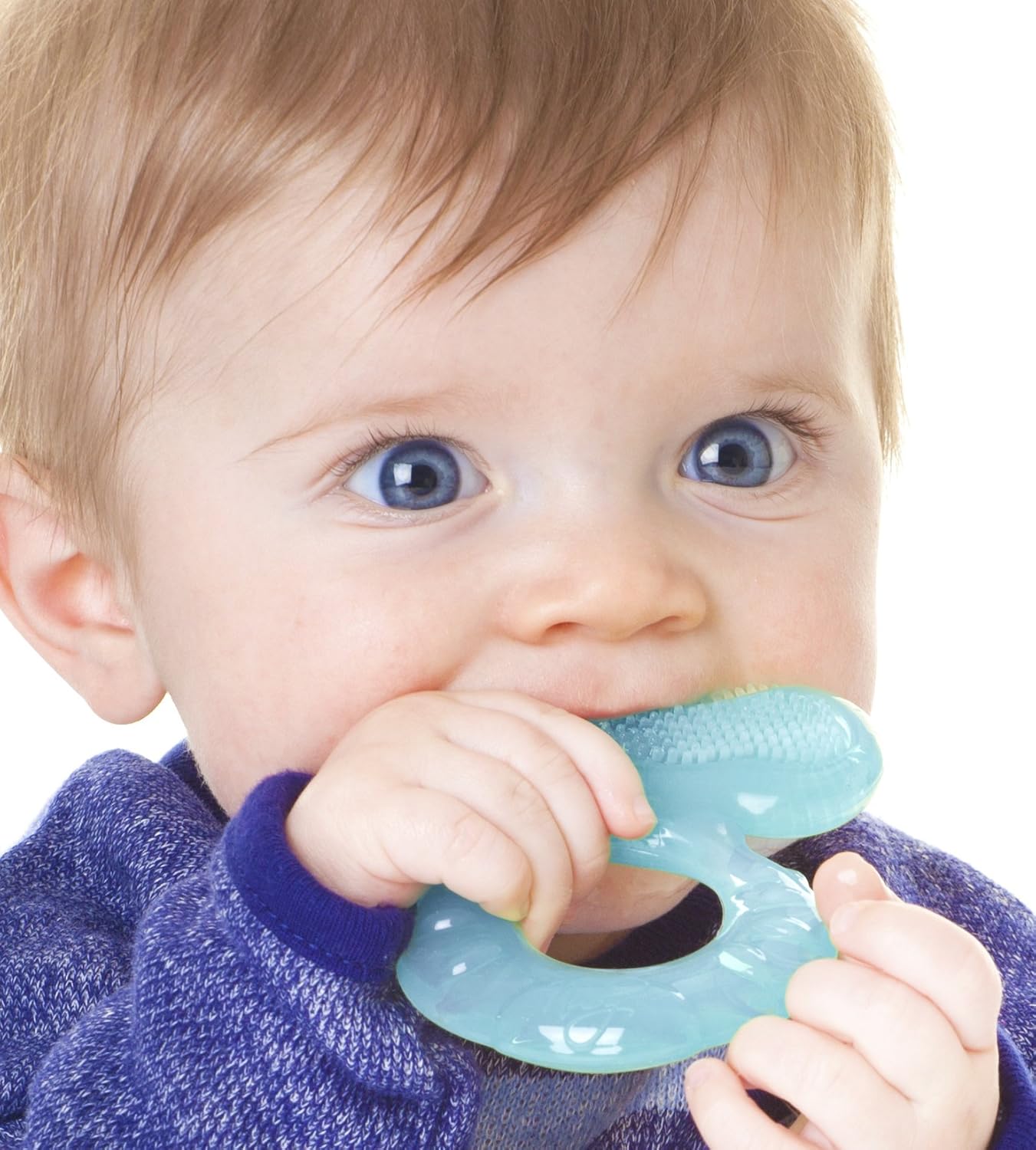
Beyond Baby Teeth: The Importance of Early Dental Care
While the emergence of baby teeth is an exciting milestone, it’s also the beginning of your child’s dental care journey. How can parents ensure they’re setting a good foundation for their child’s oral health?
Starting a Dental Care Routine
Even before the first tooth appears, you can start promoting good oral hygiene:
- Wipe your baby’s gums with a soft, damp cloth after feedings
- Once teeth appear, start brushing twice daily with a soft-bristled toothbrush and a rice-grain sized amount of fluoride toothpaste
- Schedule your baby’s first dental visit by their first birthday or within six months of the first tooth appearing
Preventing Early Childhood Caries
Early childhood caries, also known as baby bottle tooth decay, can occur when babies are put to bed with bottles of milk or juice. To prevent this:
- Avoid putting your baby to bed with a bottle
- If you must give a bottle at bedtime, fill it with water
- Begin transitioning to a cup around 6 months of age
- Limit sugary drinks and foods
By establishing good oral hygiene habits early, you’re setting the stage for a lifetime of healthy smiles.

Teething Myths Debunked: Separating Fact from Fiction
There are many myths and old wives’ tales surrounding teething. Let’s examine some common misconceptions and set the record straight:
Myth 1: Teething causes fever
Fact: While teething may cause a slight increase in body temperature, it does not cause high fever. If your baby has a temperature above 38°C (100.4°F), it’s likely due to an illness rather than teething.
Myth 2: Teething causes diarrhea
Fact: There’s no scientific evidence linking teething to diarrhea. If your baby has persistent diarrhea, consult your pediatrician as it could be a sign of an infection or other health issue.
Myth 3: Babies need teething biscuits
Fact: While teething biscuits were once popular, they’re not recommended today. They can be a choking hazard and may contribute to tooth decay due to their sugar content.
Myth 4: Early teething means advanced development
Fact: The timing of teething is not related to a baby’s intelligence or physical development. Every baby develops at their own pace.
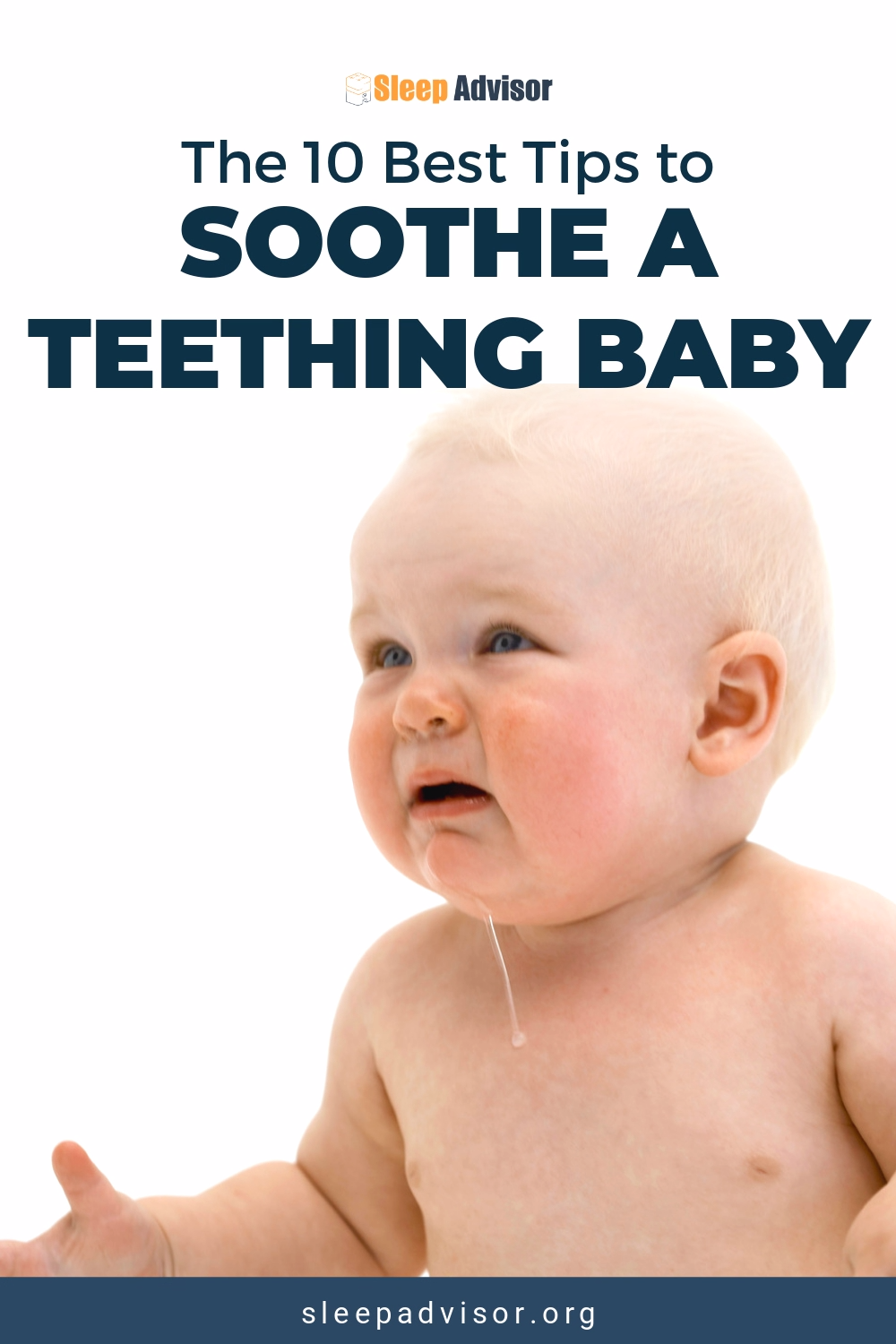
Myth 5: Amber necklaces relieve teething pain
Fact: There’s no scientific evidence supporting the use of amber necklaces for teething relief. Moreover, they pose a choking and strangulation risk.
By understanding these myths, parents can focus on safe, proven methods to help their babies through the teething process.
Teething is a natural part of your baby’s development, and while it can be challenging, it’s also an exciting time. By understanding the process, recognizing the signs, and knowing how to provide relief, you can help make this transition smoother for your little one. Remember, every baby is unique, so what works for one may not work for another. Don’t hesitate to consult with your pediatrician if you have concerns about your baby’s teething process or overall health. With patience, care, and the right strategies, you and your baby will successfully navigate this important milestone together.
How Long Does Teething Last?
How Long Does Teething Last?
Teething
A baby’s first primary tooth usually begins to appear anytime between 4 and 10 months. Just like growth, every baby is so unique so don’t be concerned if your child’s teeth begin to appear earlier or later than other babies their age.
What is teething?
Teething is the process where the tooth cuts through the gums and emerges into the mouth. Teething is often a painful and uncomfortable time for your child and quite often symptoms occur before any teeth start appearing through the gums.
How long will it last?
There is no telling how long it will take for a tooth to make its way through the gum. Some babies are unsettled and unhappy for only a few days before a tooth is visible, while for others it may be a more prolonged experience. By the time your child is 3 years old, all twenty baby teeth will have come through.
Teething is often a painful and unsettling time for your baby and new teeth can explain why your baby is discontent and apparently unwell. Parents generally accept that teething can be difficult, but they also want to know how long this phase will last and what remedies exist that will help reduce some of the pain and discomfort associated with teething.
Parents generally accept that teething can be difficult, but they also want to know how long this phase will last and what remedies exist that will help reduce some of the pain and discomfort associated with teething.
Read on to understand more about this important but often frustrating step in your child’s development:
Symptoms of teething
The range of symptoms and their severity varies between babies; your baby may cut teeth with no complaints at all or teething may bring lots of pain and tears for your bub.
For most babies though, symptoms of teething can be minor and infrequent. The pain of teething can last for around 8 days, but if multiple teeth come through simultaneously, the pain can continue for longer.
Signs of teething
If your baby is teething, you may notice:
- Swollen red gums
- Cheeks that are flushed red
- A rash on the face (resulting from excessive drooling)
- Excessive drooling
- Biting, rubbing or sucking the gums
- Changes in appetite
- Irritability and unsettled behaviour
- The appearance of a blister on the gum
Symptoms such as fever, rashes (not caused by irritation from drooling) and diarrhea are not associated with teething. If your child is experiencing these symptoms, speak to your healthcare professional. Furthermore, if symptoms of teething last for longer than a few days with no sign of a tooth, it’s possible that your baby’s pain and distress may be due to other causes and you should contact your healthcare professional.
If your child is experiencing these symptoms, speak to your healthcare professional. Furthermore, if symptoms of teething last for longer than a few days with no sign of a tooth, it’s possible that your baby’s pain and distress may be due to other causes and you should contact your healthcare professional.
Treating teething pain and discomfort
Quite a few natural methods exist that may help to soothe some of the pain and discomfort for your teething baby.
- If your baby is old enough, try giving them cold fruit purees or yoghurt. Or if your child is eating solids, foods like sugar-free teething rusks, peeled cucumber or chilled carrots can also assist with discomfort. Just make sure they are big enough so they can’t be swallowed and won’t pose a choking hazard.
Milk Rusks
- Drooling can cause irritation around the mouth and chin. Gently cleaning the mouth with a soft cloth can help. If your baby has a facial rash, take care not to rub the inflamed area and use a barrier cream to provide protection from further irritation.

- Rub a clean finger over your baby’s gums as the pressure can temporarily numb the pain.
- Give your baby a teething ring; refrigerating (not freezing) the teething ring before giving it to your baby adds even more relief.
- Provide your baby with a soft, cold face washer, which they can chew on. The cold can help reduce the discomfort of sore gums.
- A pacifier (or dummy) to chew or suck on can also provide some relief. Avoid putting honey or jam on the pacifier as this may increase the risk of tooth decay.
- Avoid using Amber teething necklaces as they can pose a choking hazard.
- Giving your child some extra affection and attention can also help take their mind off the pain and discomfort.
If these methods don’t provide any relief for your child, speak to your healthcare professional.
Teething gels aren’t usually recommended because they probably don’t help ease the pain and have side effects. Before considering any pain relief medication or teething gels containing anaesthetic to your baby, consult your baby’s doctor.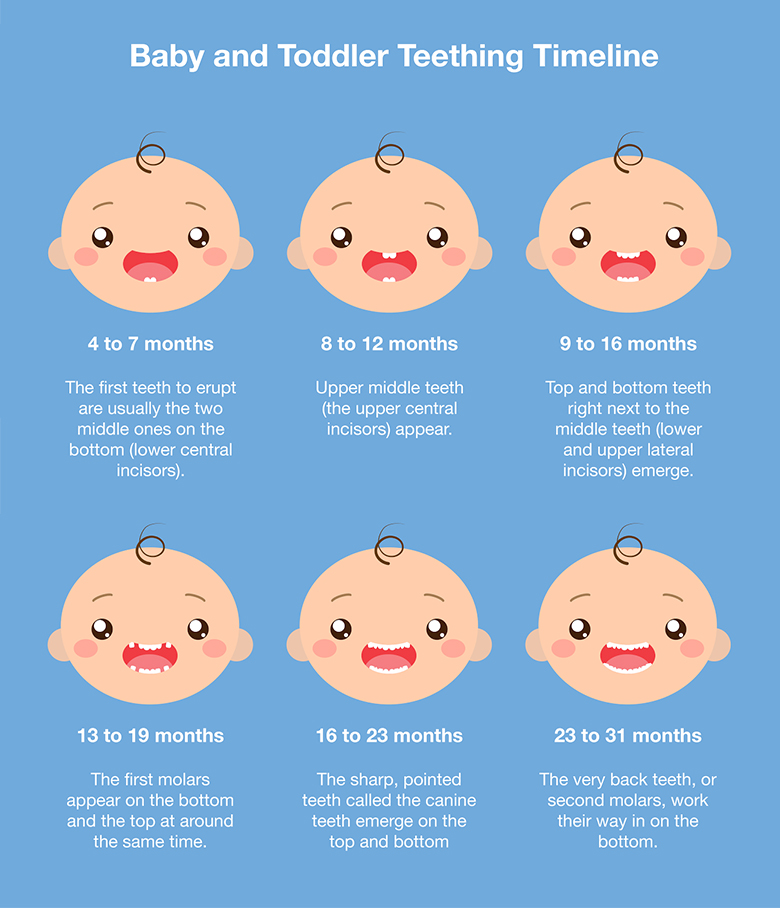
Teething FAQs
Here are answers to some of the most commonly asked questions we are asked when it comes to teething:
My baby has swollen gums. When will the teeth start to show?
If your baby’s gums are swollen and you can feel a tooth beginning to erupt underneath, it is most likely normal swelling and it should go down after the tooth cuts through. Symptoms such as swollen gums may occur around 4 days before the tooth actually emerges. If you are concerned, speak to your doctor.
How long does it take for the first tooth to come out?
There is no exact answer as to how long it takes for the first tooth to cut through, however, estimates are that teething can occur over an 8 day period. Symptoms may begin to occur around 4 days before a tooth begins to erupt. However, this can vary from child to child and the tooth may take longer or shorter than this time to erupt. Sometimes babies can grow multiple teeth at once, so it may seem like teething is taking a lot longer.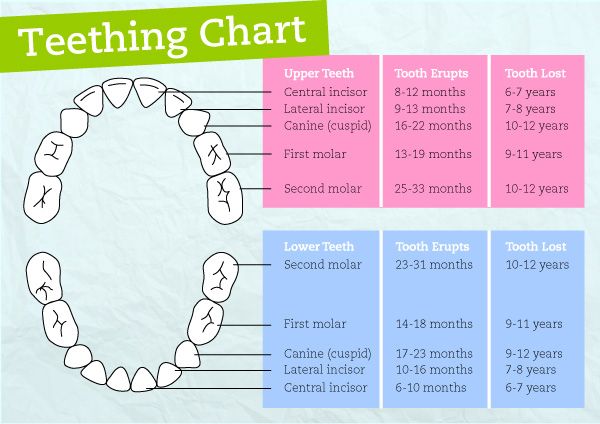
My baby is drooling and chewing on things, does this mean he/she is teething?
Drooling and chewing on hands and objects is normal behaviour as your baby grows and may not necessarily mean that your child is teething. However, if drooling is accompanied by other common teething symptoms and you can actually see or feel the emerging tooth, this may mean your child is teething.
Does teething cause a fever?
No, teething shouldn’t cause a fever. The reason that fever is so commonly attributed to teething is due to the fact that the start of the teething period (generally around 6 months of age) coincides with the time that babies start to get more infections, as there is a decrease in antibodies that they receive from their mother. If your child has a fever, contact your healthcare professional.
Is teething causing my baby to wake up during the night?
There is conflicting evidence as to whether teething causes sleep disturbances. The pain and discomfort resulting from teething could lead to periods of wakefulness during the night.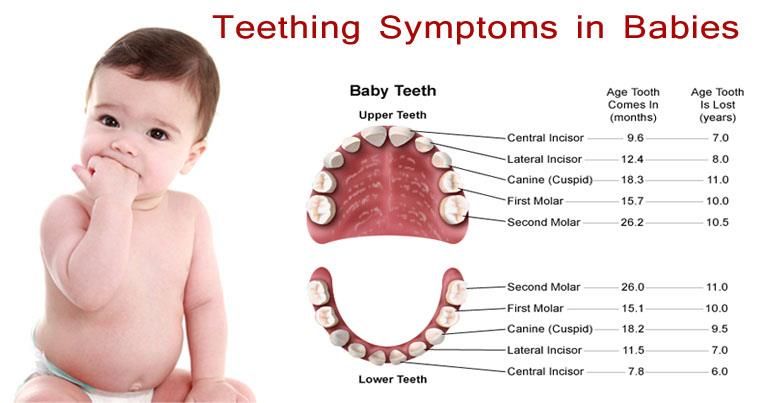 However, if your baby doesn’t appear affected by teething discomfort during the day, the wakefulness at night may not be the result of teething. Speak with your doctor if your baby is experiencing extended periods of wakefulness during the night.
However, if your baby doesn’t appear affected by teething discomfort during the day, the wakefulness at night may not be the result of teething. Speak with your doctor if your baby is experiencing extended periods of wakefulness during the night.
Can teething cause a loss in appetite?
Your child’s gums will become sore and inflamed as a tooth pushes through, which can make your baby’s mouth start to hurt. This discomfort may turn your baby off eating. However, some babies may find that the counter-pressure from food feels good on their gums and this may make them want to eat more.
Does teething pain last for extended periods of time before a tooth appears?
Teething only causes irritation around the time your baby’s tooth is about to break through the gum. The teething period generally lasts for about around 8 days, so longer periods of discomfort (commonly associated with teething) may be caused by something else.
It should also be remembered that your baby has 20 milk teeth that will emerge over 2 years, and these will all cut through at different times, which may make it seem like the pain and irritability can last for months.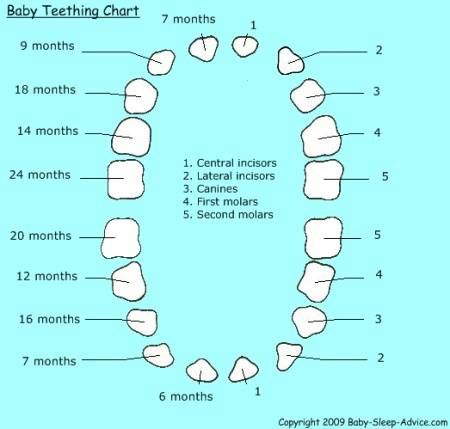
Can teething cause diarrhea?
There is no evidence of an association between teething and problems with the digestive system. The most likely reason is that teething children are prone to pick up and chew on bacteria-ridden objects that ultimately cause diarrhea. Remember, the teething phase coincides with the time period that babies are most susceptible to infections. If your little one has diarrhea, always seek medical advice.
Looking after baby’s new teeth
Even before you can see your baby’s first tooth it’s a good idea to get into the habit of wiping their gums with gauze or a soft wet washcloth during bath time. The easiest way to wipe your baby’s gums is to wrap the gauze or washcloth around your index finger and rub gently over their gums. Getting your baby used to having their mouth cleaned as part of their daily routine should make it easier to transition into tooth brushing later on, too.
Once teeth start appearing, a soft toothbrush suitable for children can be used. Gently brush on the inside and outside of each of your baby’s teeth twice a day. Try not to use toothpaste until your child is 18 months old. When your child is ready to start using toothpaste, a small pea-sized amount is all you need and be sure to use a toothpaste made specifically for toddlers. Replace the toothbrush as soon as the bristles start to look worn or splayed.
Gently brush on the inside and outside of each of your baby’s teeth twice a day. Try not to use toothpaste until your child is 18 months old. When your child is ready to start using toothpaste, a small pea-sized amount is all you need and be sure to use a toothpaste made specifically for toddlers. Replace the toothbrush as soon as the bristles start to look worn or splayed.
When teeth start appearing (or by the time your child is 12 months old) is the perfect time to visit a dentist. They can also provide further assistance on teething and caring for your child’s new pearly whites.
The appearance of your baby’s first teeth may be a painful experience, but it is also a momentous time. Your teething baby will need plenty of extra love and lots of cuddles as their new pearly whites push through their little gums.
Remember, if you’re concerned about your toddler’s teeth, see your dentist.
Suggestions from the Bellamy’s community
Here are some suggestions from members of the Bellamy’s community on how to treat teething:
- I place a clean face washer in the freezer and then let my little one chew on it all day.
 It cools his gums and catches his dribble. Ireena K.
It cools his gums and catches his dribble. Ireena K. - Frozen peas, my kids loved them and still ask for a bowl of frozen peas! Nicole C.
- Frozen face washer does the trick. Mel T
- Bite valve on my Camelbak water bottle. Favourite teething toy. Tory W.
- A cold leek to chew on. Kelly S.
- Rub the gum above the emerging tooth with your finger. Rub often and with pressure. Babes love it and the tooth comes quicker. Natalie C.
- Sticks of carrot or cucumber. Kali L.
- Watermelon or strawberries. Susanne L.
- I make ‘breastmilk dummicicles’ for my little one using his dummy. I also offer him frozen fruits like frozen banana or frozen durian to nibble on. Rachel C.
- Try Bellamy’s Organic Milk Rusks to help relieve the pain of teething. Suitable from the age of 6 months, our organic milk rusks are a great alternative to teething rings as they are made from certified organic ingredients of wheat and milk, with no added sugars. So not only are they a great way to bring your baby’s gums extra relief during the teething period, but they are also a great snack for your bub!
Customer testimonials from Facebook:
- Our little boy loves the Bellamy Organic Milk Rusks thankfully we don’t have any allergy issues and he goes to town on them every day They’re easy to pack and carry around in the pram, car, nappy bag, etc so we always have them on hand And we’re now finding the remnants under chairs, wrapped in blankets and in with the teddies and toys love our little man and watching him grow is a delight especially knowing we have good quality products to offer him – Emma G.

- My little girl loves them so much she gets excited when you get one out. Her little chompers came through easy – Amelia B.
- They were great all my kids used them – Ellen F.
- With my first little boy, we use to call them ‘super sticks’ – always saved the day – Hev J.
Post Views:
9,679
About the author
At Bellamy’s Organic, we only make certified organic, nutritious baby food and infant formula. With us, you can be confident you are giving your little ones a pure start to life.
When Do Babies Start Teething?
When do babies start teething? Learn when to expect your baby’s first tooth and how to help comfort your child through teething.
You probably feel like there are so many things to keep track of when it comes to your new baby’s development. As a new parent, you are always wondering what to look for and what comes next.
You may have noticed your baby is a little more fussy than usual. Maybe they are drooling a lot or having trouble sleeping. Whatever has you wondering about when babies start teething, you’ve come to the right place. We’re discussing everything you need to know about your baby’s first tooth, teething, and dental care for your baby.
Maybe they are drooling a lot or having trouble sleeping. Whatever has you wondering about when babies start teething, you’ve come to the right place. We’re discussing everything you need to know about your baby’s first tooth, teething, and dental care for your baby.
Signs Your Baby Is Teething
There is a wide range of ages for when you can expect your baby to start teething. Most babies will have their first tooth emerge between 6 and 12 months old. However, it is not uncommon for some babies to begin teething and produce a tooth earlier, around 3-4 months old.
Download Kinedu to track your baby’s milestones and progress!
While there is no definitive way to anticipate exactly when your baby will cut their first teeth, there are some classic signs that your baby is teething. Teething symptoms can begin months before your baby’s first tooth, and some babies won’t show any signs that their first tooth is about to erupt.
The most common signs of baby teething are:
- Drooling – Babies will often begin drooling anywhere between 2 ½ months and 4 months old. You can expect drooling to continue throughout your baby’s teething process. You may even be surprised by just how much drool your baby can produce during this time. Bibs can help to keep your baby’s clothes dry and keep them more comfortable.
- Teething Rash – All that drooling can cause irritation and chafing around your babies mouth, chin, and neck. Wiping away the drool can help prevent irritation, and barrier creams such as Vaseline and Aquaphor can provide added protection to their sensitive skin.
- Coughing and Gagging – If your baby isn’t showing symptoms of a cold or flu, then it is very likely that you baby’s onset of coughing and gagging is directly related to the excess drooling caused by teething.

- Biting – You may have noticed that your baby is putting their hands or other objects into their mouths more frequently. They may also start biting on your fingers or their own fists. Teething causes pressure to build up in your baby’s gums and chewing and biting provides relief through counterpressure. Your baby will try and chew on anything that is available to them. Cold washcloths and frozen teething rings can provide extra relief and a safer option to help alleviate your baby’s discomfort.
- Behavioral Changes – Your baby may experience irritability and express their discomfort through crying and whining. Your baby’s first teeth are the most painful to erupt. The swelling in their gums and pain while the tooth is breaking through can all contribute to your baby being fussier than usual.
- Pulling on their ears and rubbing their cheeks – Because teething causes inflammation in the gums and pain in your baby’s jaw, your little one may also feel discomfort in their ears and cheeks.
 This is because they all sit along the same nerve pathway. It is common for babies that are teething to pull at their ears and rub their cheeks to try and alleviate their discomfort.
This is because they all sit along the same nerve pathway. It is common for babies that are teething to pull at their ears and rub their cheeks to try and alleviate their discomfort.
- Disrupted Sleep – You might feel like you have just settled into a predictable sleeping schedule with your baby, when all of a sudden they are waking in the middle of the night and are having trouble settling back to sleep. Teething commonly interrupts a baby’s sleep.
Other signs that your baby is teething include changes in eating as well as swollen lumps, known as hematomas, appearing on your baby’s gums.
What Order Do Baby Teeth Come In?
Your baby’s first teeth to come in will be their central incisors. These are the first two teeth in the center of their mouth. Usually the bottom central incisors will come in first, followed by the ones on the top.
The rest of your baby’s teeth will likely follow this timeline:
- 9-13 months – Lateral incisors (the teeth next to the middle)
- 13-19 months – First molars (the baby teeth closest to the opening of the mouth)
- 16-23 months – Canines or Cuspids (the teeth next to the lateral incisors)
- 23-33 months – Second molars (the teeth in the back of the mouth)
You can expect your baby to have all their teeth by the time they are 3 years old.
Ways To Help Alleviate Teething Symptoms
Now that you know what you can expect when your baby starts teething, when the time comes you will also want to be prepared to help alleviate some of your baby’s symptoms and discomfort.
There are so many teething remedies on the market today. To help soothe your baby while you wait for their first tooth, it is important to make sure you are using safe and effective remedies for your baby.
Download Kinedu to get individual guidance from experts in early childhood development!
Stay away from numbing agents, amber necklaces, and over the counter teething gels. Safe teething remedies include:
- Pain relievers: acetaminophen (if your baby is over 2 months) or ibuprofen (if your baby is over 6 months)
- Gum massage
- Vibrating teethers
- Refrigerated teethers
- Cold washcloths
- Plush teething toys
- Distractions
Caring For Your Baby’s First Teeth
Once your baby has their first tooth, you will need to start providing proper dental care.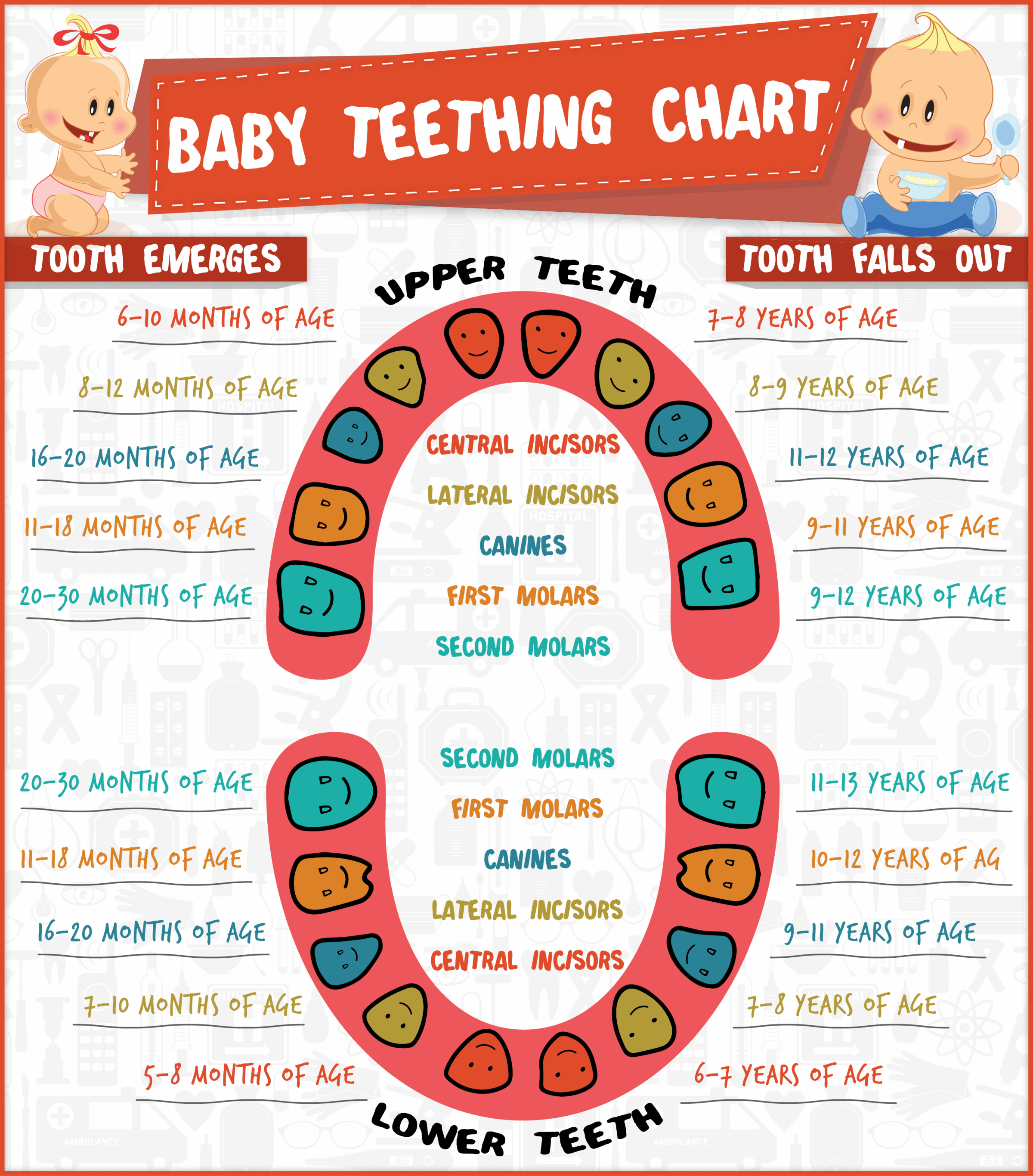 Starting proper dental hygiene as soon as possible can help your baby become accustomed to brushing and the dentist, as well as keep their teeth and gums healthy.
Starting proper dental hygiene as soon as possible can help your baby become accustomed to brushing and the dentist, as well as keep their teeth and gums healthy.
Fluoride
Fluoride is an important mineral that helps to protect your baby’s teeth and prevent their teeth from decay. At around 6 months of age, your pediatrician may recommend adding fluoride to your baby’s diet, especially if your water does not contain any.
Brushing
As soon as your baby has their first tooth, you should begin brushing their teeth twice a day with a baby toothbrush and a small smear of fluoride toothpaste. This is especially important once your baby is done eating and drinking for the day.
Visit The Dentist
You should call and schedule a pediatric dentist appointment as soon as your baby has their first tooth. A pediatric dentist will make sure all your baby’s teeth are developing properly and make sure there aren’t any dental problems.
Limit Sugary Foods
Babies under one year of age should not be given juice at all. Sugary drinks and sweet beverages, along with processed foods is considered to be one of the reasons that so many toddlers are developing cavities.
Sugary drinks and sweet beverages, along with processed foods is considered to be one of the reasons that so many toddlers are developing cavities.
Your baby’s first tooth is an exciting and important milestone. While teething can be a difficult time for you and your baby, with some safe home remedies, patience, and proper dental care, before you know it, they will have plenty of baby teeth to use when they begin eating solid foods.
When do babies start teething? Now that you know the answer to this question, the teething symptoms, how to alleviate them and how to care for your baby’s teeth, download the Kinedu app to get individual guidance from experts in early childhood development.
What to do when a child has first teeth
Home Articles What to do when the first teeth appear in a child
The eruption of the first milk teeth can be a great challenge for both the child and the parents. In addition to the attention and care of parents, there are a number of special tools that facilitate teething. Whims, quick excitability, lack of appetite and good sleep – all these are signs that the child is starting to cut teeth.
In addition to the attention and care of parents, there are a number of special tools that facilitate teething. Whims, quick excitability, lack of appetite and good sleep – all these are signs that the child is starting to cut teeth.
The eruption of the first milk teeth can be a great challenge for both the child and the parents. In addition to the attention and care of parents, there are a number of special tools that facilitate teething. Whims, quick excitability, lack of appetite and good sleep – all these are signs that the child is beginning to cut teeth.
Characteristic signs of the appearance of milk teeth:
- swelling of the gums, increased salivation, this lasts for about 3 days until the tooth erupts;
- child pulls in his mouth to reduce itchy gums;
- fever may appear, which lasts no more than 2 days, while the temperature may rise to + 38C;
- indigestion and lack of appetite are also associated with teething
- to reduce itching in the gums, the child is given teethers made of latex or PVC;
- teethers relieve the condition of the gums and develop fine motor skills of the hands;
- if the child is already given complementary foods, then the chilled mixture should be poured into the bottle;
- Massage regularly with your fingers or a soft brush.

Safety
To alleviate the suffering of the child, parents lubricate the gums with an antiseptic gel. The gums are lubricated in the composition of such gels for short-term relief. The pain does not bother the baby for about an hour.
To help the child without risk to his health, you should make a decoction of chamomile, clematis and rhubarb.
Teething time for a child can last 1-3 years.
Sign of the appearance of the first teeth
- Swelling and redness of the gums.
- Profuse salivation.
- Increased excitability and capriciousness.
- Anorexia and diarrhoea.
- Temperature.
What drugs can be given to babies
Painkillers in doses prescribed by a doctor and not more than 5 times a day. A chilled pacifier and gentle gum massage with fingers or a soft brush have been proven to help.
Teething in a baby is a very serious period when parents and doctors must use all means and drugs to alleviate the child’s condition.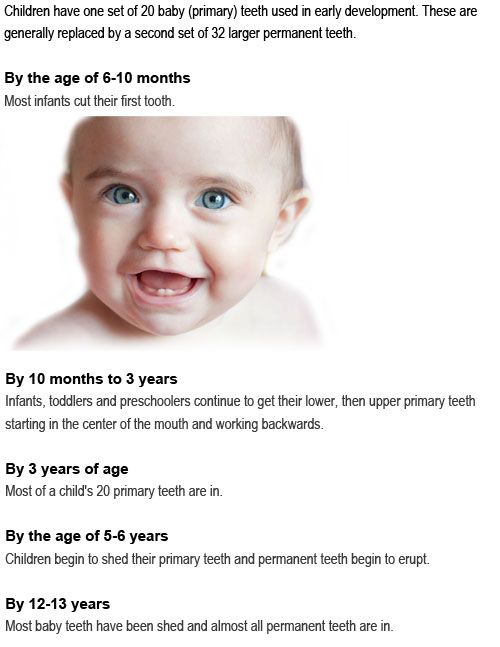 During this period, the child should be given objects made from natural materials, such as wood.
During this period, the child should be given objects made from natural materials, such as wood.
In severe cases, when it is not possible to bring down the fever, the doctor decides to place the child in a hospital under the constant supervision of physicians who apply complex treatment to the child until the first tooth appears.
2021-11-08
Back to list
Popular services
Request a call
By clicking the send button, you confirm your consent to the processing of the data provided
Make an appointment
By clicking the send button, you confirm your consent to the processing of the data provided
Ask a question
Ask your question about dental services and we will contact you
By clicking the send button, you confirm your consent to the processing of the data provided
Thank you!
Ask a Question
A child is teething: how to help a baby teething, what medicine will ease the pain
When a baby starts teething, it is often painful.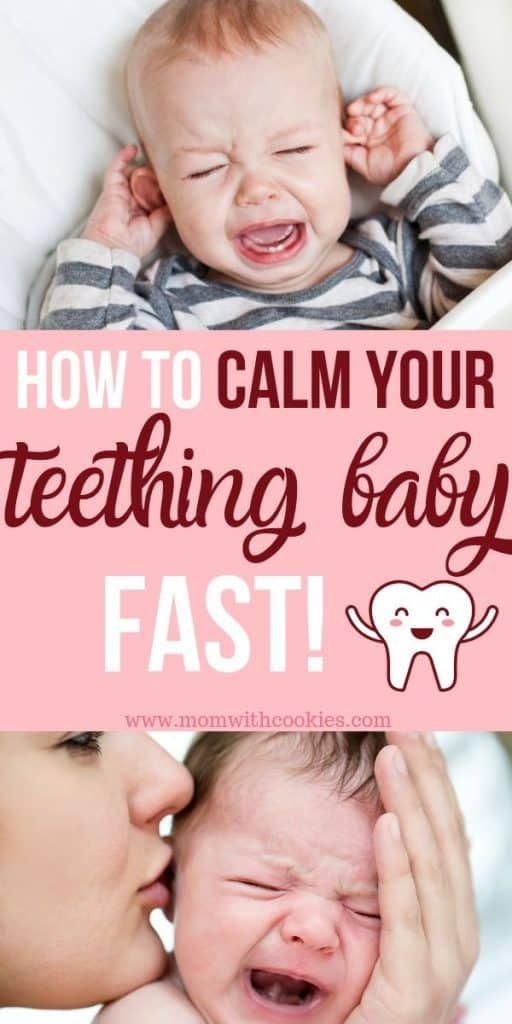 Many children do not sleep well, often cry, some even have a fever. What to do and how to help a child when he is teething hard: what medicine can be given and how to calm him down so that he does not cry. Answers on the website of the children’s medical center “Azbuka Zdorovya”.
Many children do not sleep well, often cry, some even have a fever. What to do and how to help a child when he is teething hard: what medicine can be given and how to calm him down so that he does not cry. Answers on the website of the children’s medical center “Azbuka Zdorovya”.
Contents
- What definitely won’t help the child?
- Permitted Relief Methods
Teething is not easy for a baby. Usually this condition is characterized by irritability, capriciousness. The gums may also swell, and therefore the child wants to gnaw and chew on something hard, which can provoke pain and crying. At the same time, there may be increased salivation. When teething, an increase in body temperature is possible. This is true, only the rise in body temperature, characteristic of cutting teeth, should not exceed 38 g, and usually this temperature lasts no more than 3 days. If the child has other symptoms, then a full-time examination of the pediatrician is indicated to identify the true cause of this condition of the child.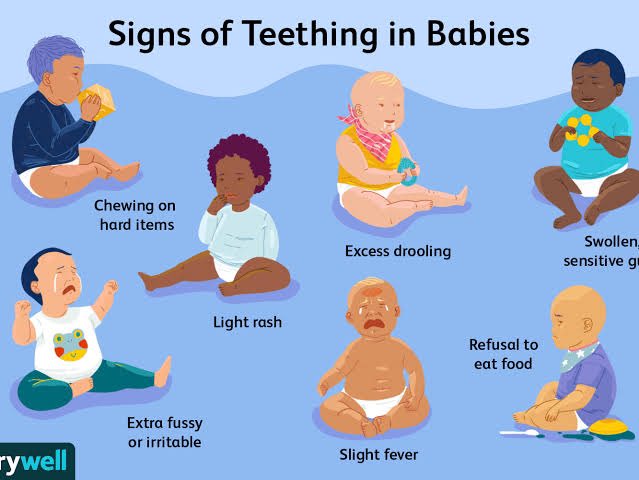
What definitely won’t help the child?
Gels with analgesic component: lidocaine, benzocaine, salicylate choline. The first two active substances led to mass poisoning of children (in some countries they are banned after multiple cases of poisoning). Choline salicylate has the properties of NSAIDs, but is recommended for use after 1 year, and since its content in one strip of gel is unknown, we cannot be sure that the amount of absorbed substance will be safe.
Also, do not use homeopathic remedies, because in this case, only placebo effect is possible from positive effects, allergic reactions, poor tolerance, etc. from negative ones.
Allowed ways to alleviate the condition:
- The very first and most important thing that a child in such a difficult condition needs is the love of parents, constant contact with them, hugs, kisses.
- If the baby is breastfeeding, offer him the breast more often, this will be the optimal combo – due to the biomechanics of the sucking reflex, the baby will massage the gums in close contact with the mother, which will additionally calm him down.

- It is worth using teethers with liquid inside. It is also recommended to refrigerate them before use (refrigerate, but do not freeze), as this will alleviate the discomfort in the baby’s gums.
- Massages the swollen gums of a child, if he is comfortable. Massages can be performed with special silicone fingertips with various relief surfaces, as well as with a clean finger. It is permissible to give a child chewing cotton fabrics soaked in cool water.
- Any cooling of swollen gums will provide relief, so after six months, children can be offered cool water to drink. If the baby drinks from a bottle, chewing on a silicone teat with cool water inside will also make the baby comfortable (see point 3)
- If pain is severe, paracetamol or ibuprofen-based pain relievers can be used after consulting a pediatrician, which can relieve pain for up to 12 hours or more.
- Given that saliva may be actively secreted during teething, this can lead to local irritation of the skin around the mouth, as well as the skin of the cheeks, neck, fingers.


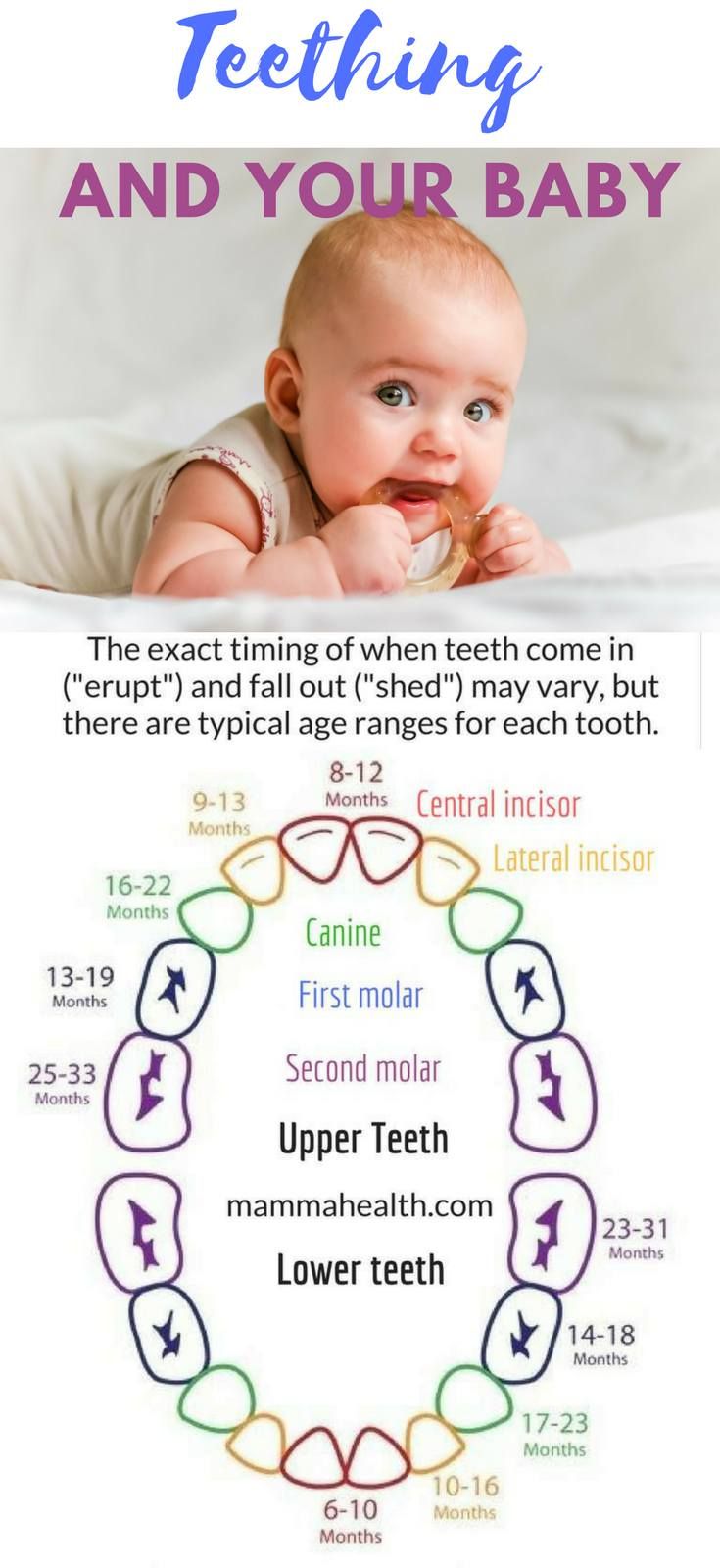
 It cools his gums and catches his dribble. Ireena K.
It cools his gums and catches his dribble. Ireena K.

 This is because they all sit along the same nerve pathway. It is common for babies that are teething to pull at their ears and rub their cheeks to try and alleviate their discomfort.
This is because they all sit along the same nerve pathway. It is common for babies that are teething to pull at their ears and rub their cheeks to try and alleviate their discomfort.

